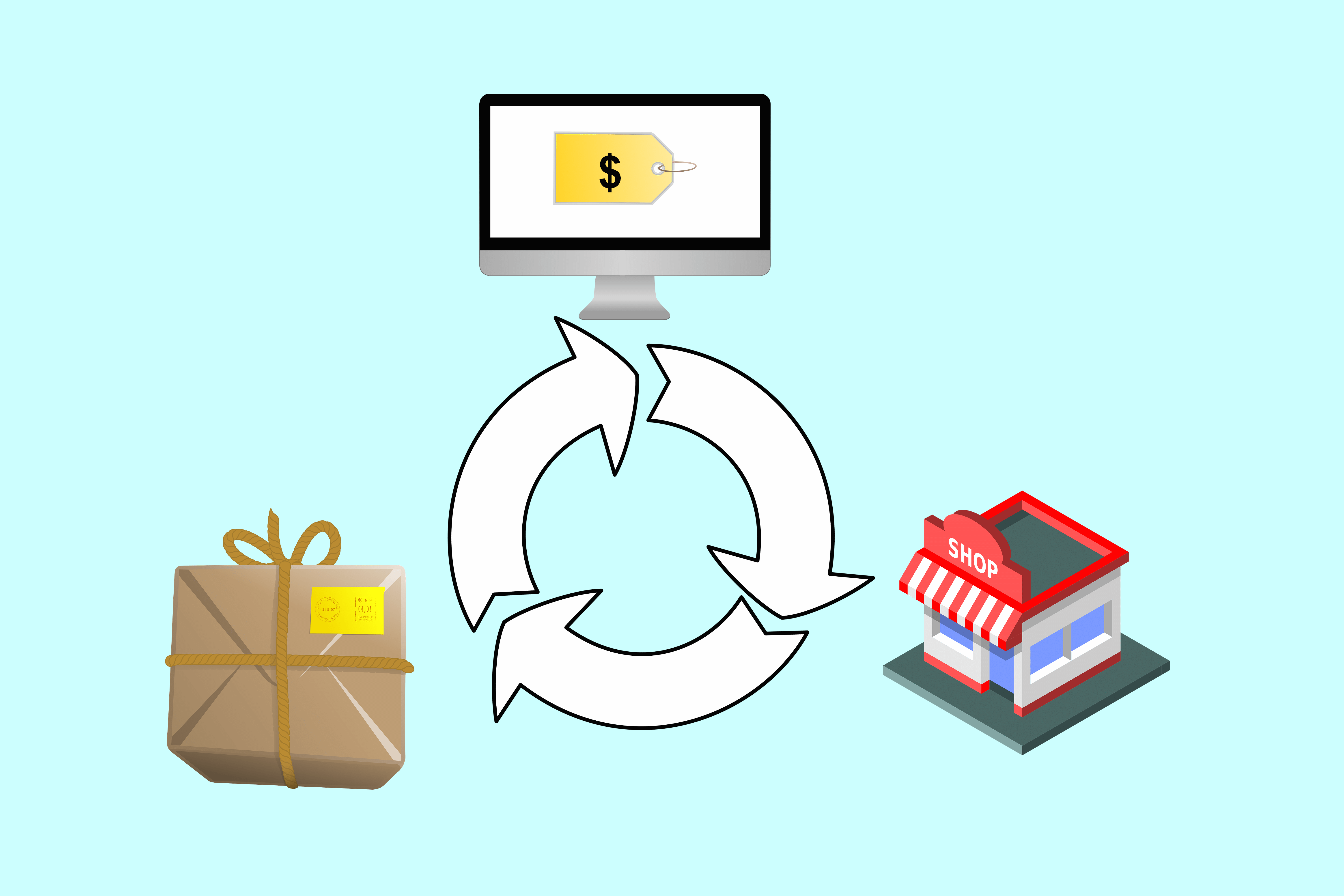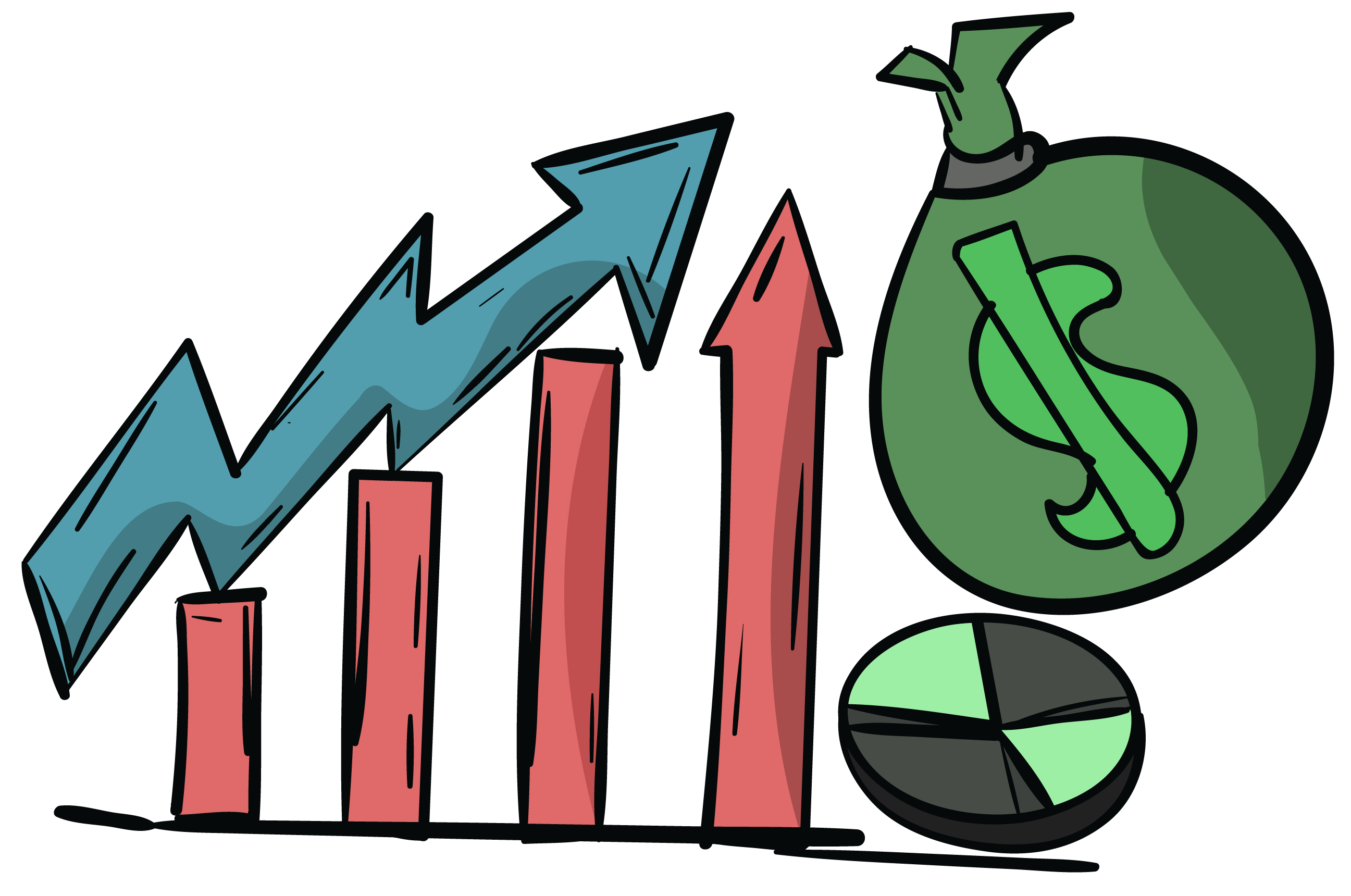Category: Business
ContentRally is a leading source of reliable news and trending topics on Business. Get hard-to-find insights and advice on Business from industry-specific leaders.

Car between 5 – 10 Lakhs – what is it?
There are multiple benefits to getting a car in that range, some of which include : Easy management: these cars are a lot easier to handle than the powerful engine cars. Most of the people living in India encounter heavy traffic and packed streets, so this is an added benefit for them. Parallel parking also becomes easier as their size allows for easy squeezing between packed spots Environmentally friendly: these cars tend to be fuel-efficient in comparison with cars of a higher budget. This results in lesser emissions, therefore, less pollution. Higher affordability; a vast majority of youngsters and working adults care more for affordability than for lavishness. These cars are cheaper to manufacture and this makes them the best choice for such individuals. Less Maintenance: since a lot of money is saved because of their compact nature, with the right usage, you can expect some cuts in maintenance costs in the long run. You can find these cars along with their current prices and key features and specifications on Autoportal. Best brands for that price are numerous but we have listed down the best ones for you to help you narrow down your choices; Hyundai Grand i10 price is amongst the most affordable in India. It has amazing key features such as the diamond cut alloy wheel and the rear ac vents along with the touch screen AV system which allows you to control the car easily and takes most of the tasks off your back. The Grand i10 follows Hyundai’s elegant Fluidic design language strictly. The elegant-looking diamond-cut alloys make the car even more appealing. Important safety features, like the Anti-lock Braking System (ABS) and passenger front airbag, are missing in the standard list, and they come only as an option with higher variants. Maruti Suzuki Swift has some amazing features such as automatic climate control along with smart play infotainment and steering mounted control, all for which make up the features of a good car in this price range. Honda Amaze has the ultimate diesel CVT along with advanced infotainment and upgraded safety; which are currently the features in high demand by the majority on the Indian market looking for the perfect car for domestic use. Maruti Suzuki Baleno comes with ABS with EBD which enhances the control over the vehicle while you lock and skid it around. It also comes with an infotainment system which allows you to use Siri software to help you with calls and messages. Its upgraded projector headlamps come with an amazing hi-tech look. In addition, Autoportal prepared a pleasant surprise for all buyers! Book your car between 1st - 31st August 2018 and get a chance to win. The 1st winner will receive 2N/3D Trip to Dubai, the 2nd winner receives 10 Gram Gold Coin, and OnePlus 6 (64GB) is waiting for the 3rd winner! Moreover, 500 Lucky winners will get a gift voucher worth Rs. 500! Read Also : Useful Tips About Mobile Car Detailing To Avoid Any Costly Maintenance And Repair Issues 5 Safety Features In Your Maruti Car You Did Not Know About Washing Your Car: 7 Dos And Don’ts
READ MOREDetails
How To Choose The Best Broker For You
Choosing the right Forex broker can make a big difference in launching a successful investment career in the trillion-dollar forex market. However, choosing the best forex broker is no easy task given the overwhelming number of brokers all gunning for people’s money at any given time. 1. Types of Forex Brokers : When it comes to online foreign exchange trading, an important consideration is opening a trading account with a reputable forex broker. There are three types of forex brokers ranked based on how they handle transactions and how they execute market orders. No Dealing Brokers : As the name implies, No Dealing Brokers lack a dealing desk and instead, strive to offer the best composite quotes from multiple forex quote providers. In this case, providers will post their best market prices that NDD forex broker will have to choose to execute transactions. NDD brokers charge a commission or widen the bid-offer in order to make profits from trades entered by traders. Market Makers : A market maker is a type of forex broker that offers a two-sided customer market. In this case, the broker always ends up taking the other side of trade depending on the side that a forex trader has taken. In case a trader makes a buy, the broker is obliged to take the sell-side. Electronic Communication Network : An ECN forex broker provides a platform whereby forex traders from all walks of life regardless of skills congregate to place trades. 2. Features of a Reliable Forex Broker : Regulatory Compliance : In a sector where the number of international forex brokers can be overwhelming, scrutinizing regulatory compliance can be the only way of ending up with a reliable forex broker. Going through forex brokers reviews do not a sure way of ending up with a reputable broker as such reviews can be manipulated. Highest rated forex brokers are always in compliance with the highest level of regulation depending on jurisdiction. For example in the U.S, regulated forex brokers are members of the National Futures Association and are registered by the U.S Commodity Futures Trading Commission as well as the Retail Foreign Exchange Dealer. A flashy forex broker website cannot be used to rate a broker. Trading with a regulated broker is essential if one is to rest assured of the security of their deposits as well as the integrity when it comes to trade execution. Trading Platform : The best forex trading account is one that comes with a trading platform that is pleasing, easy to use and has a variety of indicators and tools for technical analysis. Legit forex trading companies offer trading platforms that have clear-cut buy and sell buttons. Some go the extra mile and provide panic buttons for closing all open positions at once. Conversely, trading with a forex broker offering a poorly designed platform can lead to costly mistakes such as opening a trade when one intended to close or going short when one meant to go long. Customer Service : Highest rated forex traders come with a robust customer service team that is always on dial any time of day to address forex trader’s needs. When choosing a forex broker, it would be essential to give them a random call just to get an idea of the service they are likely to offer once an account is opened. 3. How to Identify a Good Broker : A good forex trader is one that charges lowest transaction costs when opening and closing trades. Spread and commission charges can significantly eat into one returns if caution is not taken. Legit forex trading companies allow people to deposit and withdraw funds hassle-free. Any broker that comes with restrictions on when one can withdraw or the amount of money one can withdrawal should be a big no. Execution of trades is another aspect that one should always pay close attention to when selecting forex brokers. Under the normal market condition, a forex broker should allow trades to get filled, at or very close to the market price on the screen. Going through forex broker reviews is of utmost importance prior to opening a forex trading account. Such reviews provide clear-cut information about the kind of forex trading service one is likely to experience based on other forex trader’s experience. In addition, trading with a regulated forex broker is a must. Read Also : How Real Estate Factors Into Business Decisions Protecting Your Business From Retail Theft 6 Tips To Help Your Business Stay Ahead Of The Competition
READ MOREDetails
Top tips for making business purchases
When it comes to running your own business, it is vital to do all that you can to succeed. With 20% of small businesses failing in their first year, it is clear just how key it is to pay attention to all aspects of your operation. Doing this will make sure that you are one of the US businesses that not only make it past this first 12 months but also thrive. Of course, there are lots of ways to do this, and you should look into them all as a responsible business owner. One key area to focus on is your business finances and doing all that you can to keep them in good order. Most businesses will have to spend money on making purchases at some point, and this is something that you should think about carefully. How to make awesome business purchases : By paying attention to the money that you spend on business purchases and how it is spent, you will give your business a great foundation to build on. Here are some fabulous ways to make the best business buys: Only buy what you need – for many businesses, the temptation to spend more than they need to is ever present. This could mean that you spend too much on buying items for your business, which eats into your bottom line. Before you buy anything for your business, it is important to make sure that you really need it and that it will add value to what you offer. Shop around for the best deals – you should always shop around to get the very best deals. All the little savings that you make over the year from doing this will soon add up to big savings come year end. Use reputable suppliers – it is essential when making business purchases that you only use top-class and reputable suppliers. The equipment that you buy will have a direct impact on your organization, so it needs to work as intended. Go green – within business now, the real hot topic is meeting your environmental responsibilities. This is something to bear in mind when making the business purchase so that you only shop with suppliers who care about this. By doing this, you will be using products that are kinder to the environment and you will be a greener business. What about purchasing with overseas suppliers? Of course, you may need to deal with overseas suppliers when purchasing goods for your business. When doing this, remember to be extra careful about checking their credentials and only using a reputable company. In addition, you will need to think about how to make the payment if they use a different currency in their country. Online money transfer companies are a very easy and secure way to make this type of payment as a business. Make business purchases the smart way : Buying goods or equipment for your company is a critical task in any business. By taking steps to do it right and only spend what is necessary, you will be protecting your cash flow and capital. This will stand you in good stead as you grow and move into the future. Read Also : 6 Things You Should Know Before Starting A Business Tips On Selecting A Storage Solution For Your Growing Business How To Choose Best VOIP For Small Business
READ MOREDetails
How to Boost Traffic to your Small Business
We read about new startups coming up with their services and products on the market almost every day. The story of most of the entrepreneurs is same; a team of hard-working people coupled up and managed to string some money to get off the strip to finally cruise in the field of business. Unfortunately, most of them have to close up shop for numerous reasons. Being an entrepreneur, one should be able to learn so many things, all at once. Failure teaches a lot, and there’s always a way out of the mess in every field I can imagine of. Some make it to the next level, which is; a small business: one that has steady growth and ensured revenues. Since a considerable number of people have moved on from the offline world to the digital arena, business firms have to evolve their marketing strategies as well. Failing to do so will only make your business get out of the market in the end. To create a hurdle for failure on your way, the most important thing today is to opt for some affordable digital marketing services. Affordable is necessary to cut the overall costs because initially, most startups do not have enough financial resources. What digital marketing does is that it attracts people towards the services that you have to offer to them. The four primary pillars that digital marketing works on are content, communication, community, and commerce. Let us circle around these pillars in brief. Content : To enhance your visibility to the public, you need to have a presence on the platforms that people use frequently. You must spend a little deal of your precious time and money in buying a website which can be used to reach out to the people. But to be able to generate some customers from there, you need to put some content over there to lure the masses. Content Marketing does not directly promote the business. If done correctly, it attracts the targeted audience, which can eventually drive to profitable customer action. Communication : As it is said; it takes two to tango. Although it does not precisely fit into the context, the rough meaning it carries here is that you must not focus only on speaking. Give the visitors a platform to respond to you as well. This can be achieved through adverts, personal communication with people who seem to be interested, and social media. With the application of email address at almost forum, there’s a very thin chance that people will not go through yours when they open up their account. Community : This again is customer engagement but in a slightly different way. Because of the presence of social media, businesses have the liberty to interact with their audience to understand their opinions about them. Visitors can help you improve your services to an all-new level. These platforms occasionally make changes to their policies as a whole, so you must go through them every single time they amend. If you don’t manage accordingly, well, get ready for the consequences then. Commerce : Regardless of where people choose to buy a product, it all starts with the internet today. A significant number of people search for a product online and read about it in different places to know about it as much as they can before paying for it. Digital marketing commerce meets the needs of consumers based on how they research and purchase. Review sites are the places where people spend most of their time to read about the products, and then is the online shopping stores. People use multiple applications on their smartphones to look out for the product description as well. Summing Up : Traffic is the backbone of every business, and that is why it needs to be taken care of, for better growth. Enterprises survive in the competitive market only when they have enough customers. Note that you must never compromise your quality for quantity. While there are a lot of things like SEO, SEM, PPC, this article was about what exactly can digital marketing do for your business to grow over the years. Smart and hard work must go hand in hand to reach the top of the business ladder. Read Also : Money Borrowers, A Profitable Business Building A Brand For Your Small Business Google Maps Marketing: Guides On How To Boost Brand Advantage Why Every Business Needs Digital Marketing
READ MOREDetails
Money Borrowers, A Profitable Business
Currently, because of the economy, we are experiencing around the world, it is becoming very common to borrow for various purposes, such as getting a good, solving a problem or investing in a business. Loans are a way of obtaining the money that consists of asking an amount to a person, company or bank, which gives you the amount you request plus some interest that you will have to pay over time. Normally when you ask for a loan from a bank or a company, you must show that you have the ability to pay in the future the amount you asked for in the first place plus interest, which represents their profits. This business is becoming very popular in the world, reaching the point that websites have been created to lend money online. The money borrower is those people or companies or banking entities that have a large amount of money, which they invest in making loans to people who need it. 1. How Do Money Borrowers Make Money? Lenders invest their money in loans, that is, they lend money to people with the hope of receiving an amount greater than the one initially borrowed. This occurs because users of this service must pay an extra percentage of money, called interest, which will depend on the lender. It should be noted that the interest to pay is very different if the lender is a private person, a company or a bank, because these three modalities have different purposes, because banks are usually those that charge more interest and take more time to process loans to users, unlike people and companies that tend to ask for fewer requirements, which speed up the loan process. 2. What Are The Types Of Loans That Exist? There are certain types of loans, that is, various methods by which you can apply for a loan at present, among these we have: The Online Loan: this is a very recent modality that is gaining strength every day. This consists of requesting a loan from a web portal, which provides a maximum amount that, can be requested and stable the period of time in which it will be paid. This type of loan has a very low-interest rate and can be carried out very quickly Private Loans: These are the loans that are carried out from person to person or between a person and a company. These loans can be large or small amounts of money, depending on the availability of the lender. This modality tends to take a little longer than the online loan, because it needs certain requirements, although it is still a very viable option because of its low-interest Bank loan: this is the type of loan that is carried out by a bank. These loans can vary a lot in terms of quantity and are characterized by taking a long time to be carried out. It should be noted that these tend to have very high interests. Read Also : How Businesses Can Use Stock Trading 5 Tools That Can Help You Get Your Business Organized What Can I Do To Make My Company Website More Profitable And Powerful?
READ MOREDetails
How businesses can use stock trading
Stock trading is often associated with the popular mindset either with retail investors who dabble in trading on the side or financial services providers such as hedge funds. However, there’s a whole world of people and organizations out there that benefit from stock trading, and they’re not limited to these categories. Businesses that aren’t involved in trading financial instruments as their main source of income can also benefit from stock trading, and it’s actually a wise move for most people. Here, then, is how a business can enter the stock market and provide a sustainable second income stream for itself. Keep on top of developments : Running a business is a busy task: from hiring new staff to restocking the printer, there’s plenty to be thinking about. If you don’t have someone managing your business stock trades for you all of the time, then it’s definitely worth investing in a service that can help you monitor the markets and flag up any new stock opportunities that may be of interest, as well as any key market events such as data releases that could impact their value. Stock tips every week from an information provider are sensible, and it could mean the difference between a vibrant and profitable portfolio and a less successful one. Work with a broker : Buying stocks as a business will most likely require the assistance of a broker. This is by far the most sensible option to take as it means that you’re less likely to run the risk of getting ripped off or investing in a stock that turns out to be a dud. You may be under the impression that only individuals can sign up for brokers like these – but that’s not the case. Many major brokerages make this process very simple: the online interfaces of most such companies allow you to specify your company as the buyer, and you can pick from corporation, limited partnership, limited liability company (LLC) and more. If you’re an LLC or a similar organization, then your operating agreement or constitution should probably specify who in the company has the authority to buy shares using company funds. Get your goals right : The main strategic job that you’ll have to do is work out what you want to achieve with your company investment. Perhaps you’ve got a lot of cash tied up in your company and simply want a better return than the bank, or maybe you’re hoping to build a larger income stream to fund a new branch or venture. Once you’ve got that settled, you’ll be able to instruct your broker to develop a risk profile for your firm and find stocks that match your requirements. It’s not just individuals who have the ability to sign up for brokers and buy stocks but also businesses. By keeping on top of stock market developments and having a range of fixed goals, you can raise the chances that your company stock trading experience is a smooth and ultimately profitable one. Read Also : How To Start Trading On The Stock Market And Profit? Buying Stocks For Beginners: A Guide What You Should Know Before Using ExpertOption
READ MOREDetails
Major financial problems that can affect a new business
For a new business just fresh out of the concept stage, there’s a lot of excitement ahead. However, there are often troubles on the horizon, and these tend to revolve around money issues. Finance streams may be in place when the business is first created, for example, but they can quickly dry up as time goes on. It’s expensive to hire staff, and this can often push a firm well into the problem zone. Here are some ways that new businesses can get around these problems. No finance streams : When a new business first launches, it’s usually the case that there’s some form of finance behind it – at least for a short time. The entrepreneur themselves might be financing it from savings, for example, while there may also be an investor. The long-term plan is usually to have incoming cash replace this stream once it dries out – but revenues and profits don’t come overnight, and in fact, they often don’t materialize for a long time. Instead of relying on external finance providers, it often makes sense for a new business to be “bootstrapped”. Bootstrapping essentially means cutting down costs until you reach a stage where you have the funds to raise them back up. Instead of hiring an office space, for example, why not knuckle down and work hard in your spare room until you have enough – or almost enough – sustainable income to pay for a desk somewhere? It may be tough doing this sort of thing at first, but it could be the difference between business survival and failure. Staffing costs : In a bygone age of manufacturing and industry, the main cost that businesses faced was equipment. This also tended to be where companies made cutbacks when times were hard, either by downsizing their factories, leasing out their equipment or something similar. However, for many modern American businesses, the main cost is staff. Staff members are, in general, expensive. Some, such as coders and executives, command high salaries that can quickly drain a firm’s budget. Even when a person is hired on a lower salary, there are plenty of extra considerations to take into account, which can make the hire expensive: from the additional insurance premium that a firm might need to pay on their office space to the additional computer and desk space that the staff member might need, the costs can mount up. It makes sense for many firms to hire contractors instead of as they come with far fewer financial responsibilities for the firm – and the arrangement gives both parties the flexibility to move on if needed. With umbrella companies available to manage the tax side of contractor pay, there’s no need to worry about the effect that it might have on your HR or accounting departments either. Running a new business is exhilarating in some ways, but it also comes with its problems. Finance is almost always the big one – and from large staffing costs to dried-up finance streams, there’s a lot that can go wrong. However, by focusing on finance methods such as bootstrapping and choosing contractors instead of employed workers, there are ways that you can get that profit and loss sheet under control and move towards a more sustainable financial future for your business. Read Also : Invest In A New Car, Without A Financial Liability Debunking 7 Notorious Bankruptcy Myths
READ MOREDetails
Tags in E-Commerce: This Is Why They Are Important
Twenty-some years ago, there were no tags. The Internet was in its infancy, digital transactions and interactions a pipe dream and Big Data was still actually little. Today, though, tags reign as multi-purpose tools to manage your online content and much, much more. Tags essentially are a means of defining and differentiating data. Used in a marketing/advertising context, they collect information about visitors to, say, an e-commerce website, and how they behave, sending it back to the originating platform for further analysis and action. More generally, tags are an important way to structure the content for usability and SEO. Think header tags, which separate sections of content on a website and establish visual hierarchies. As marketer Aleh Barysevich writes in Business 2 Community, that’s important for calculating your page rank. For bloggers, he adds, blog post tags can help organize posts within a content management system and are less important for SEO than for semantic optimization. But it’s e-commerce where marketers have become creative with tags and their functionality. It’s tags that enable a brand to “follow” consumers with messaging once a site has been visited or an ad clicked on. And as today’s twist on e-commerce of peer-to-peer selling or social marketplaces grows in importance, tags are keeping pace. Patrick Mackaronis, the founder of Brabble, notes that the “marketplace” function on social platforms like Facebook (and Brabble, too, for that matter) represents an environment for transactions that is transparent, easy and frictionless. As a result, he adds, that’s turned the global online classified market into a big business, now at the $100 billion marks, but poised to shoot past $1 trillion in the not too distant future. “It’s also driven the need for a new type of tag, one that meets the needs of the individual seller versus the brand’s marketing and advertising teams,” Pat Mackaronis notes. Macaroni’ Brabble has responded to the need by patenting what they have branded *Star Tags. These tags are in many ways more versatile than standard tag technology, he says. They are designed to facilitate how a seller showcases products being sold in social marketplaces and how they’re purchased, through programmable links embedded into the digital content. Mackaronis says: “*Star Tags stay native to a post, and can be shared infinitely across the social web as well as with eCommerce platforms.” *Star Tags perform like tags on e-commerce sites, tracking data behind each transaction – like amounts of money being spent on particular types of products. They give social sellers the same kind of power as big brands to understand their buyers and target them more effectively. With the input of Logica, the leading tech firm with which Brabble has partnered, the *Star Tags technology will be built out. Mackaronis is expecting the two organizations to use the technology as a basis for future direct partnerships and revenue programs with companies that want to make their online sales and marketing campaigns work harder – and more effectively. Read Also : 5 Affordable E-Commerce Shopping Carts For Small Business 8 Key SEO Strategies For E-Commerce Websites Oh, Crop! Killer E-Commerce Mistakes You Need To Conquer
READ MOREDetails
How can your business benefit from bespoke software development?
Many businesses rely on off-the-shelf applications and stock software to run their operations. As much as such software comes with different features, it might not provide all the functional requirements that come with running a business. You might also run into challenges as stock software also comes with other unnecessary functions that might not be relevant to your policies. One of the solutions to this challenge is to hire professionals for bespoke software development. It comes with a number of benefits that could help your business as shown below. Control over design and functionalities : Bespoke software development helps a business to customize its applications to accommodate its requirements and needs. The developer uses tools to come up with designs that are useful to their clients. The advantage of bespoke software development is that the entire development process is monitored and your feedback helps in ensuring the developers include only features that your business needs. Complete ownership : As a business owner, you will have complete ownership of the software designed for your business. This might not be the case with third-party applications as there are terms that bar you from making any changes to the way the software operates. Working with a Bespoke Software Development Company that deals with web and software development gives you an asset that you can manage freely and you don’t have the compulsion to upgrade your software. You can only do this whenever you feel that your business needs an upgrade of operations but not because a third party has decided it’s a mandatory procedure. Expansion of existing tools : If the business owns tools for managing data and other processes, you can hire a bespoke software development agency to have these tools expanded to transform repetitive tasks through automation. Tailored multi-user tools can store data and use a central repository and this would help to save time for the business. It also enhances transparency, access and reporting, and data validation. Such a system brings together an array of operations together to transform how the business runs. Integration : Developers can make bespoke software to integrate with other applications installed to help the business. This is not to say previous integrations are rendered obsolete, but it’s a way to enhance the efficiency of systems by providing backing technology. Bespoke software should be introduced as a measure to improve operations. Potential marketability : In other cases, you might decide to sell software that was developed for your business. Although the application was originally developed for internal use in your business, a bespoke solution could be turned into an off-the-shelf application that can be used by other businesses. This creates room for your business to earn more money by leasing the software. Software integrations can help a business to run more efficiently. Although many businesses use third-party applications, it is cheaper and more convenient to have bespoke applications developed with the needs of the business in mind. Such an application is the property of the business and you can make any upgrades or tweaks you want to suit your business. Read Also : What Are The Benefits Associated With Crowdfunding For Businesses? The Business Networking Benefits Of Co-Working Spaces Get The Details On How Sferic Protect Can Benefit Your Business & Its Safety
READ MOREDetails
Explore Some Interesting Marketing Trends for Your Business in 2018
How effective is your business marketing strategy? Have you been successful in staying abreast with the latest marketing trends? Have you been implementing effective strategies for measuring your success? If the answers to the above questions are no, do not lose heart. You are certainly not alone on this count. Several small businesses and SMEs do not even bother to find out if at all their business marketing tactics are working successfully. Here we would be examining some of the latest business marketing trends that are dominating the scenario today. You are advised to follow these strategies for gaining incredible business success. Tune Your Market Strategy : A small segment of business owners is aware when their market strategies are tanking. This could happen due to lack of planning, poor planning, haphazard attempts at success and no foresight. Successful digital marketers know that a large portion of their budget must go into content marketing on blogs, social media, and emails and so on. Good content must be created and promoted so that the business is noticed and can take off. Plan, Plan, Plan Less than 40% of businesses have effective content marketing strategies in place. Some fail due to poor quality content, others because they don't target their audience properly. A good marketer always tracks activity through each stage of the funnel and ensure that the strategy is fine-tuned when things go wrong. Tracking & Measuring : How to gain marketing success digitally for your SMEs could still seem to be a mystery for many of you. A huge percentage of small business entrepreneurs, as much as 46 percent to be precise, actually do not have any idea if the marketing strategies for their businesses are effectively working or not. Thanks to the present cutting-edge technologies, you are in a position to keep on tracking all your marketing returns, expenses, and debt. For example, you could today find out exactly how much it would be costing your business for acquiring a new customer. You must consider all dollars diverted toward various areas of marketing including social media, website, blog writing, trade shows, direct mail, paid social, etc. you must consider factoring in all you have already spent on all these important marketing elements and then divide the amount by the number of new clients you acquire every month. Moreover, you must find out from exactly which marketing channel you are able to get new clients and more inquiries. It is imperative to consistently track ROI. Social Media Marketing Is Currently the Rage : As per a recent study, it has been predicted that 2018 is surely going to be the year of intense social media promotion and marketing. Among the SMEs, an impressive 71 percent is expected to gain new clients by using social media platforms effectively for marketing their brands. This present marketing trend must be given a lot of importance and most entrepreneurs are appreciating and understanding the effectiveness of social media marketing. Social media is certainly one of the hottest business marketing trends. Facebook is obviously the prime choice for small businesses as 79% of entrepreneurs would be using Facebook in all their marketing endeavors. Will your business be benefitted if you incorporate the social media marketing plans into your business strategy? According to some Facebook exponents, Facebook success is all about going mobile. If you wish to maximize the impact of Facebook in the marketing and promotion of your business, you must dedicate all your efforts at generating and delivering everything mobile-friendly. Virtual Reality Is Common : Virtual reality is gaining importance by the day and is, therefore, becoming a common marketing tool for both small and big brands. The actual challenge would be to utilize Virtual Reality or VR in such an effective way that it really makes sense for both your target audience and brand messaging in general. VR marketing actually is an emerging trend and now is the right time for exploring the options that are available to you and getting well ahead of the competition. More Dependence on Interactive Content : Several brands, particularly in the B2B sector are relying heavily on PDF content or blog content for generating leads as an integral part of content marketing tactics for their organizations. 2018 is going to be the year of interactive web experiences which ultimately help in boosting engagement. These experiences would be demonstrating amazing thought leadership content definitely in more impressive, visual, and animated ways. Pinterest : Pinterest is actually regarded as a niche social networking site. However, it is forecasted to be a huge success. The best way of grabbing marketing attention is by utilizing Pinterest Lens and its versatility and functionality for engaging effectively with consumers and showcasing your mind-blowing style, products, and services. Artificial Intelligence : Early exponents of AI or Artificial Intelligence have categorically realized the efficacy of AI in boosting user engagement. However, incorporating AI into any site’s chatbox such as the Facebook messenger could be creating more creativity and it also helps you to understand clearly the target market of the brand. Artificial intelligence would be addressing consumer needs and issues with perfection and the same degree of efficacy as a human agent. Remember it would be quite effective and helpful if the artificial intelligence experience absolutely delights your customers in basically lighthearted and fun ways. Conclusion : This year marketing trends have focused on honesty and authenticity. The latest marketing trend is to focus on stark reality or brutal honesty and this marketing trend is winning a lot of acclaim and appreciation. Marketers could discuss their products and explain clearly how advantageous those products or services are. They must, at the same time, tell their target audience the scope for improvement and the flaws that may still exist. All these statements could be supported by truly objective customer reviews. Authenticity for brands is the hottest marketing trend today. Around 86 percent of the customers feel authenticity is of utmost importance while deciding and evaluating the brands. Around 60 percent of consumers believe that user-generated content is the best form of authentic content. Read Also : Marketing – What’s Right For Your Business? Know Why Content Marketing Is Important For SEO Digital Marketing: Utilize Facebook To Support Your Hospitality Business
READ MOREDetails
Tips on Selecting a Storage Solution for Your Growing Business
As your business grows, so does the need for secured professional data storage. You will have to store information in the form of graphics, e-mails, audio files, document presentations, spreadsheets among other forms. As a business owner, you should understand that you need more space to store your data when you develop new business systems or applications, generate new database records or create more files. In most cases, choosing a reliable storage solution is difficult because there are numerous professional companies offering such services. The following tips can help you determine the right storage solution for your business: 1. Assess your current and future data storage needs : Since your business is growing with time, you should first consider your current and future needs for storage. You should start by determining whether you have the minimum storage requirements for your device drivers, applications, documents, etc. Of the space you have left, you need to determine whether it can sustain your storage needs for the next five years. You can manage your business storage needs by restricting the number of storage employees can use, but you cannot sustain these restrictions for a long period of time. 2. Consider your storage options " Your storage option can be determined by the type of business you are running, your storage needs and your budget. Hence, it is very important to consider all the options to avoid making a mistake or invest your money wrongly. If it is your first time to choose a storage option for your business or you are not familiar with the options, seeking professional advice is highly recommended. However, you will have to spend some money, but it is the right thing to do instead of taking risks or depending on trial and error. Flash memory thumb drives, external hard drives, network-attached storage, and online storage are some of the options you can choose from although cloud storage is a form of online storage that increases the performance of your network, makes data easily accessible to your employees and guarantees data safety even in case of system failure. If you are not sure about the storage option to choose or even the pros and cons of the options available, you can visit ServerMania.com to learn more about these storage options. The site offers a range of information mainly about cloud storage to help you make the choice. In fact, if you don’t know the storage option to choose, you can seek professional advice from the site. 3. Develop a plan : Finally, after making up your mind that you need a data storage solution, you need to develop a plan. The plan will help you make the right choice, spend wisely and exhaust all the option(s) before you make a final decision. Consulting with a trusted IT advisor is the first thing you should do to benefit from their vast experience, knowledge, and skills. Secondly, you will have to research on your own because you cannot rely solely on opinions and ideas from other people. You will have to dispute them, argue, ask questions and give your opinion. Prudent business owners do not wait until they need more storage to look for options. Instead, they start planning in advance to avoid making mistakes and explore all the available options. Even if you are looking for a viable storage option, you don’t have to spend a lot of money because it can affect your business. In fact, you should remember that you will spend more money as your business grows because you will have more storage needs. This means that you need to be very considerate when selecting a storage solution. Read Also : 5 Steps On How To Market Your Business Using Social Media Why Every Business Needs Digital Marketing Make Your Business Popular Online
READ MOREDetails
What You Need to Know About Jaguar E-Type?
The Jaguar E-Type model sports car debuted in 1961 when the top speed for vehicles clocked in at around 70 MPH. With a top speed of 150 MPH, this vehicle blew expectations out of the water and quickly built a reputation of class and sophistication. The car was so well-built it was considered to be the most beautiful car in the world for a time. An E-type Jaguar was considered perfect from every angle, and even today stands as a supercar model for excellence. The Power of the Type : The E-type was a unique model of car that boasted 265bhp 3.8-liter engine by the final renditions of its design. The car was a marvel of 20th-century engineering and its independent rear suspension design would help define the Jaguar brand for decades to come. The car would grow larger and more reliable over its production lifespan with a greater emphasis on speed and precision. When the series finally reached the point where it could hit 60 MPH in less than seven seconds, people began to take notice and the model exploded in popularity. The Composition of the Vehicle : The E-type is a classic lightweight model, but it did not start out that way. Rather, the aluminum body and monocoque were added later as a replacement to steel construction methods. The new designs held up out on the track and would help solidify the lightweight design as a Jaguar line staple even into the 21st century. Racing was a big focus for the company at the time and eventually, a 5.3-liter engine was put in to increase torque and make the car more competitive. E-Series History : The history of the E-series is intertwined with racing and saturated with the stories of people who pushed the car to its limits. The series was actually never meant to race, there was no need for a public show of speed and the car did not have the engines for it. It was not competition worthy until the GT category for production sports cars was created with fitting requirements that matched the series specs. The E-Type would go on to win race after race like in places like Goodwood, Silverstone, and Brands Hatch. However, Ferraris would continue to dominate the racing scene with their powerful engines. Seeing that the E-type was falling behind, the company decided to create the lightweight series to push for a more competitive angle. The resulting lightweight E-Type models had an aluminum body with a 350bhp version of the 3.8-liter XK straight-six engine and a five-speed gearbox. The model was so successful that it had other companies scrambling to create newer models just to compete. The lightweight models would go on to participate in international racing circuits for years after their introduction. Eventually, the E-type production slowed down only to resurge again in the ’70s. The car's performance solidified it as a classic supercar exuding style and class that has it still see demand today. Read Also : Top 10 Signs You Might Need Auto Repair Services The 5 Most Important Motorcycle Safety Tips All Riders Need To Know Choosing The Right Anti-Theft Devices For Your Car In Houston TX
READ MOREDetails















